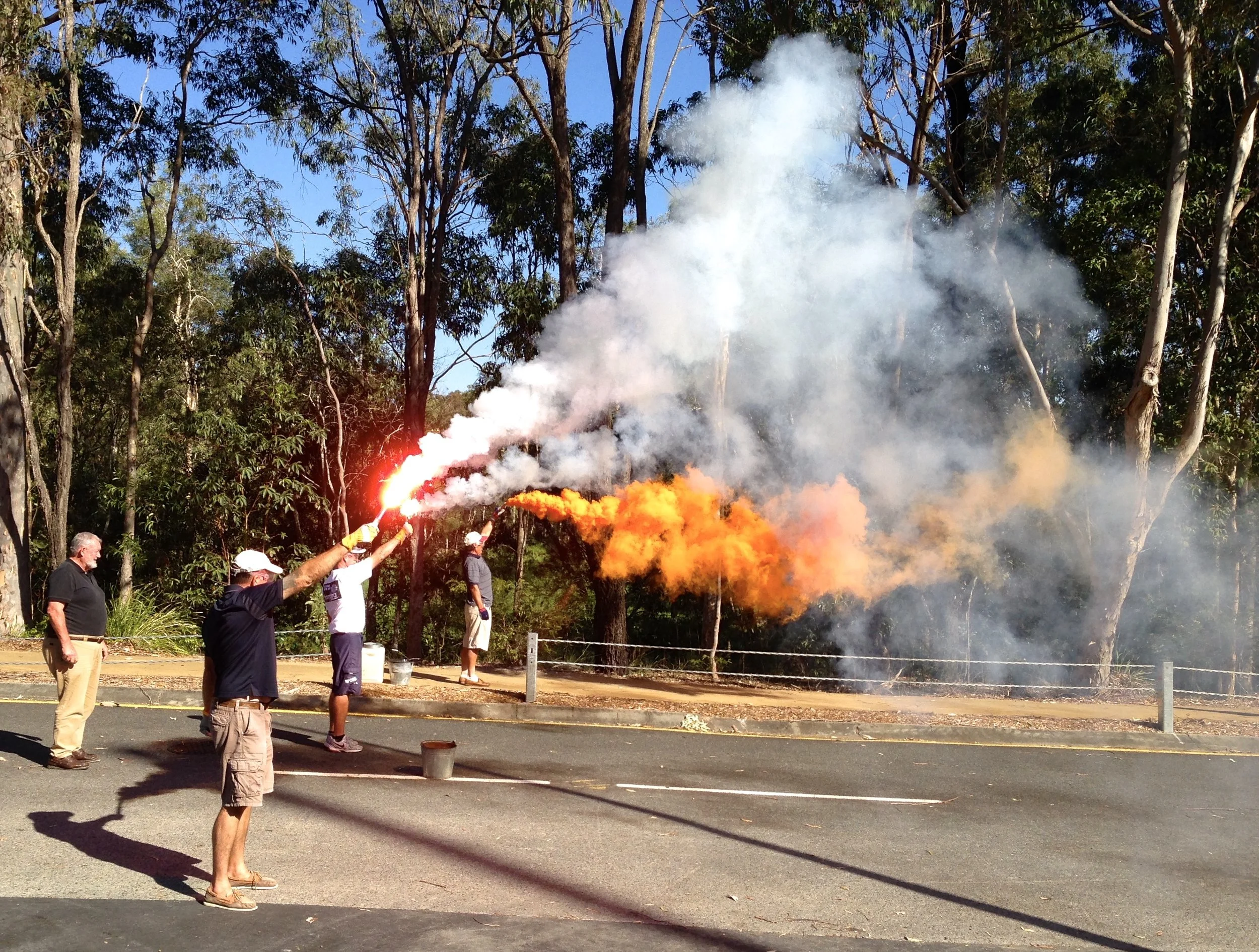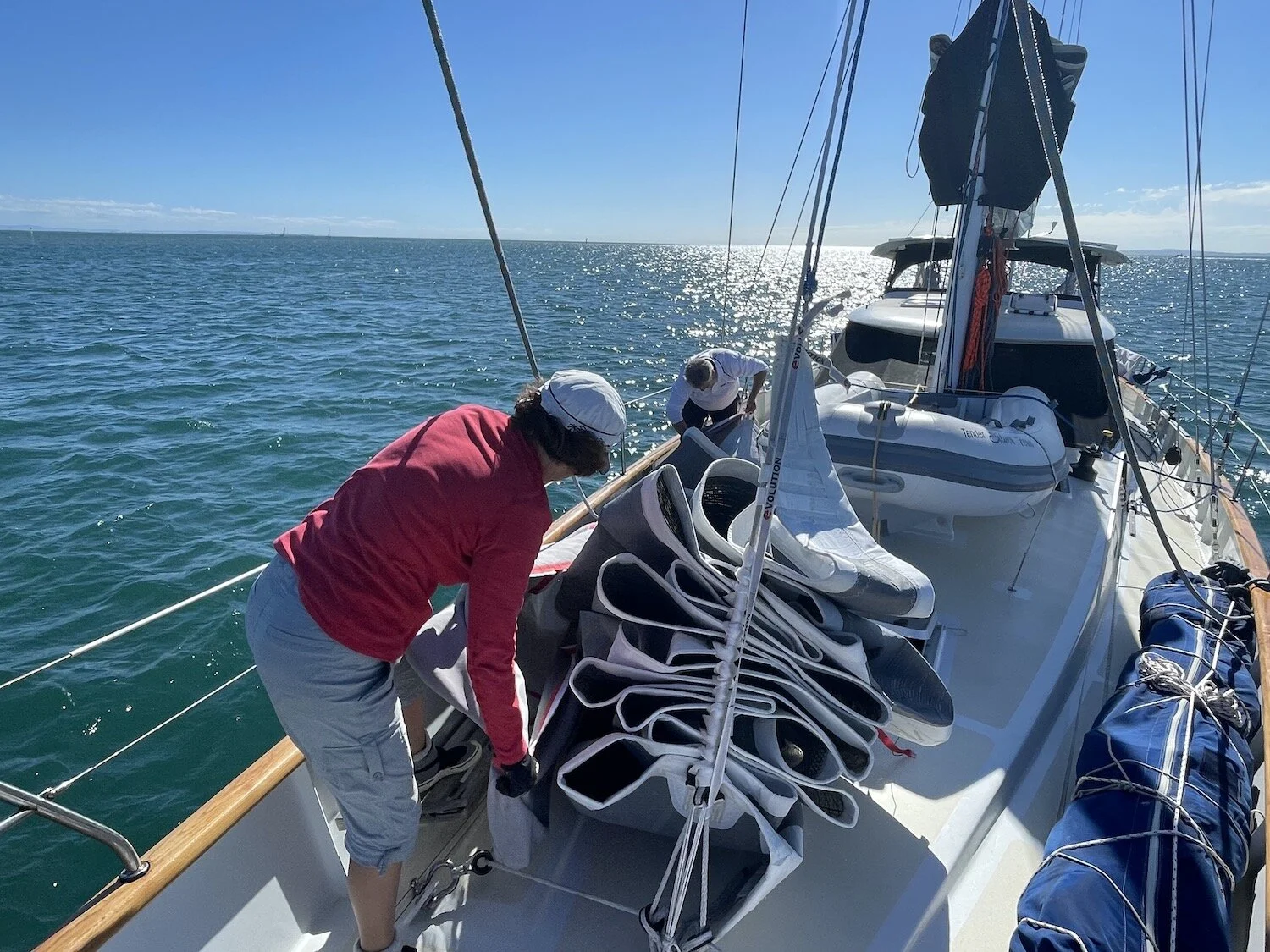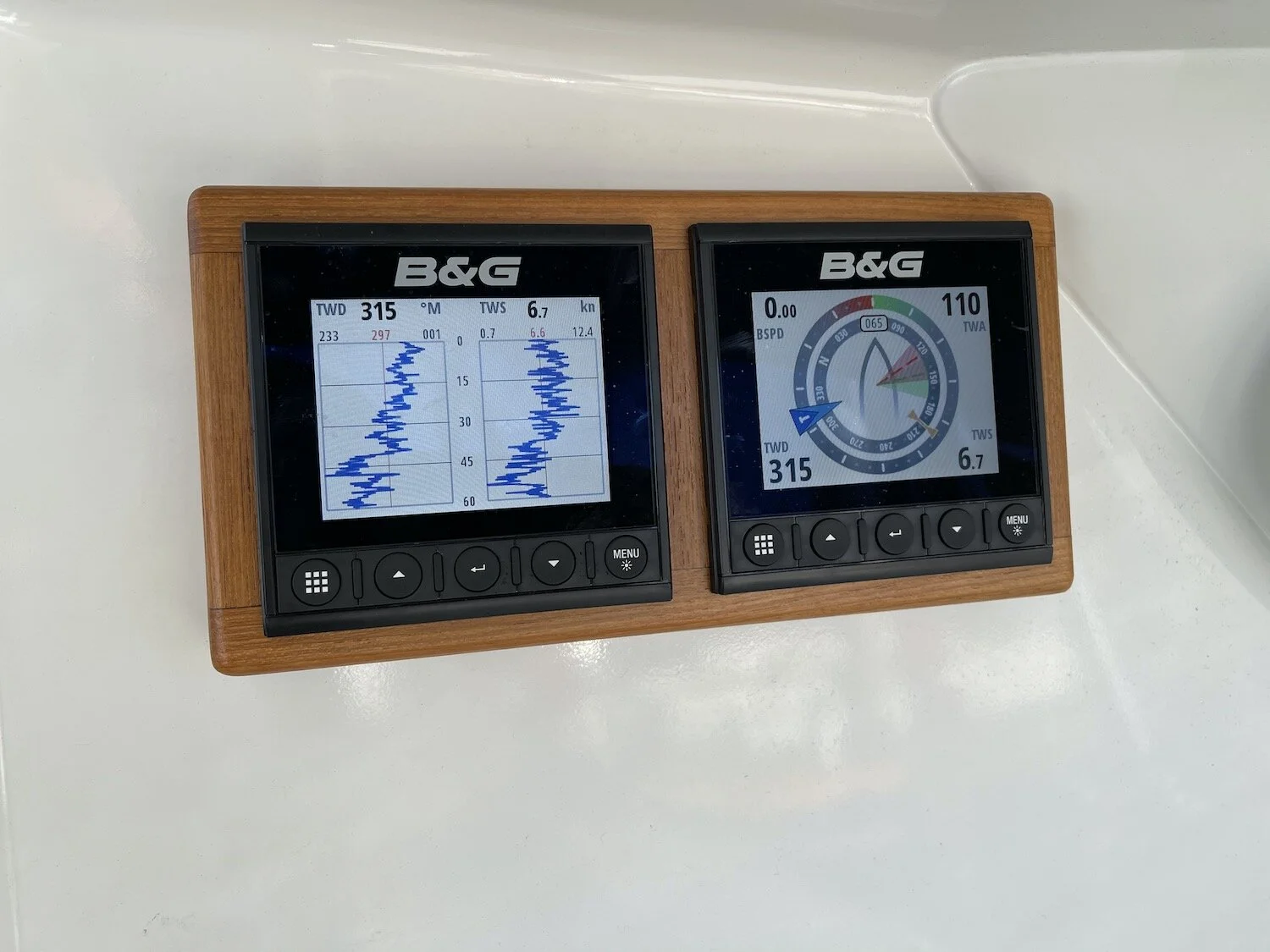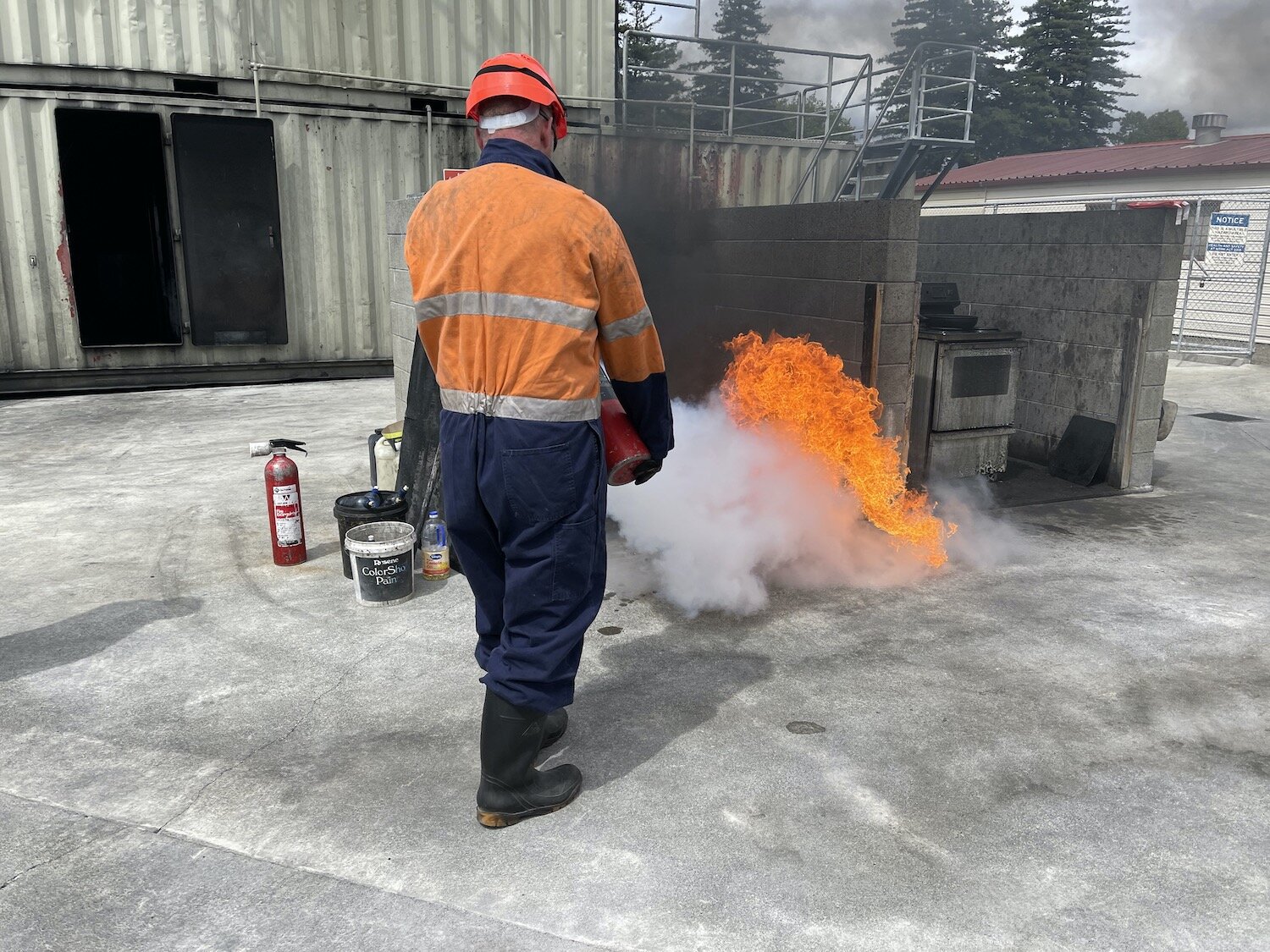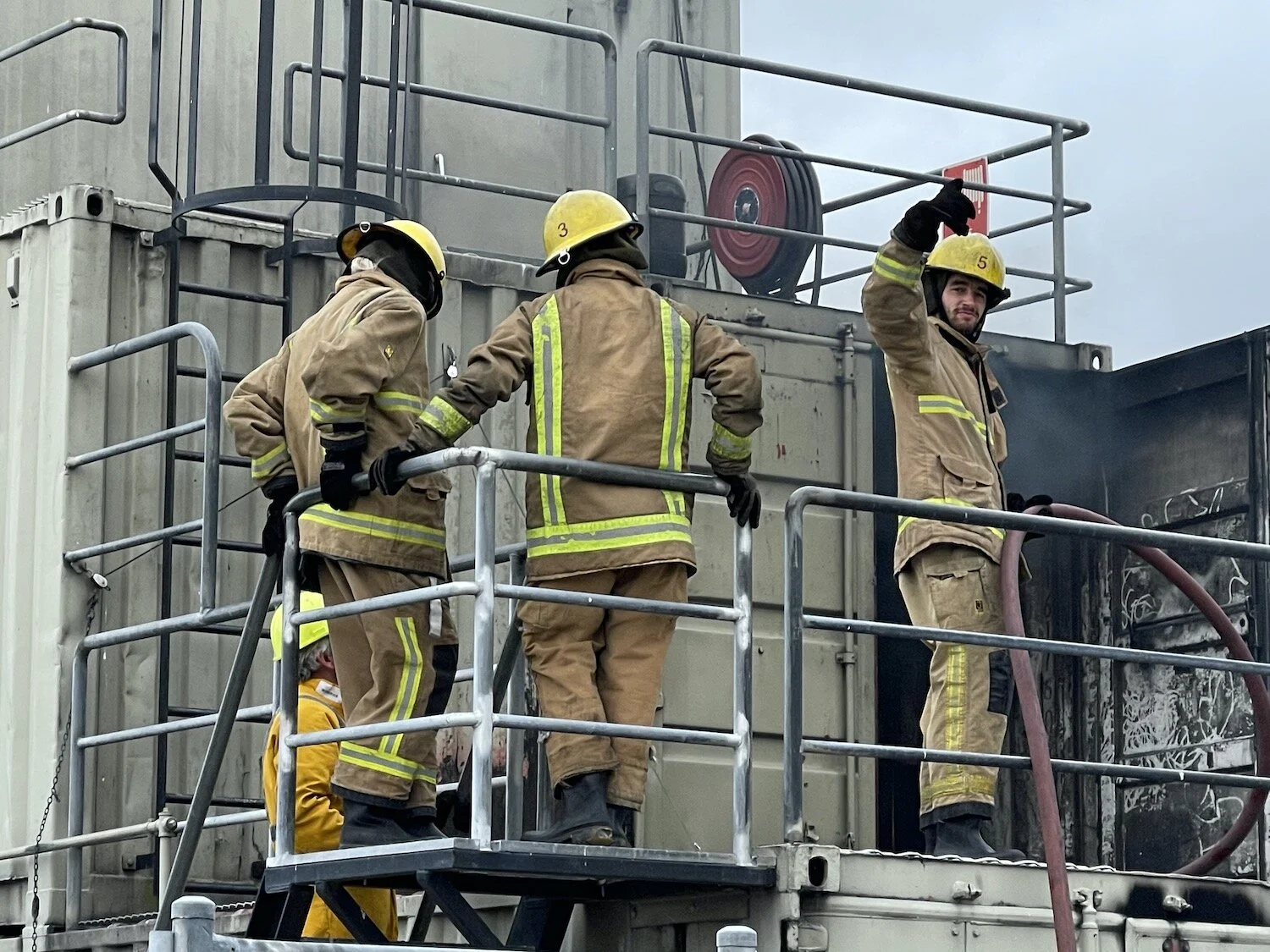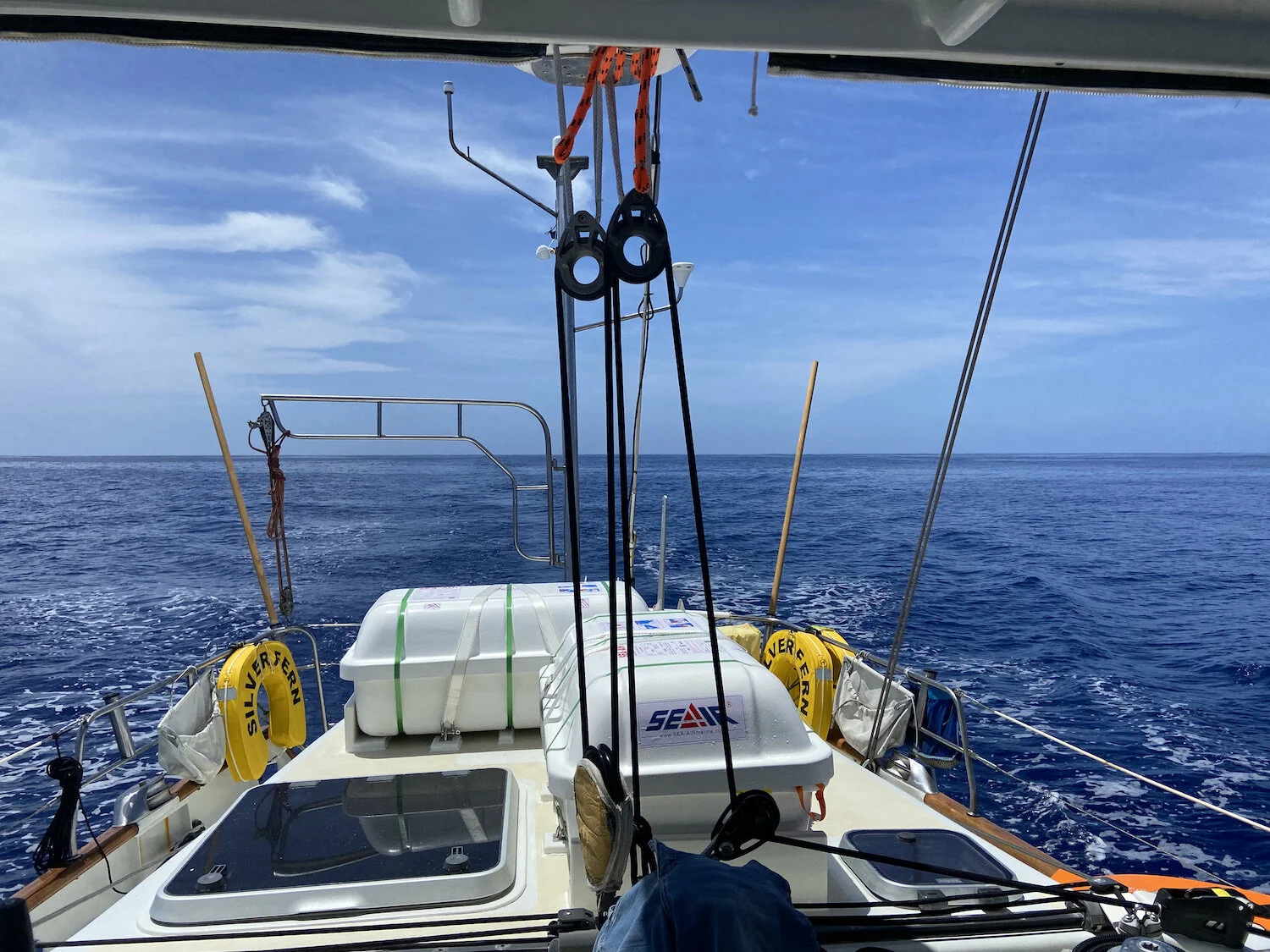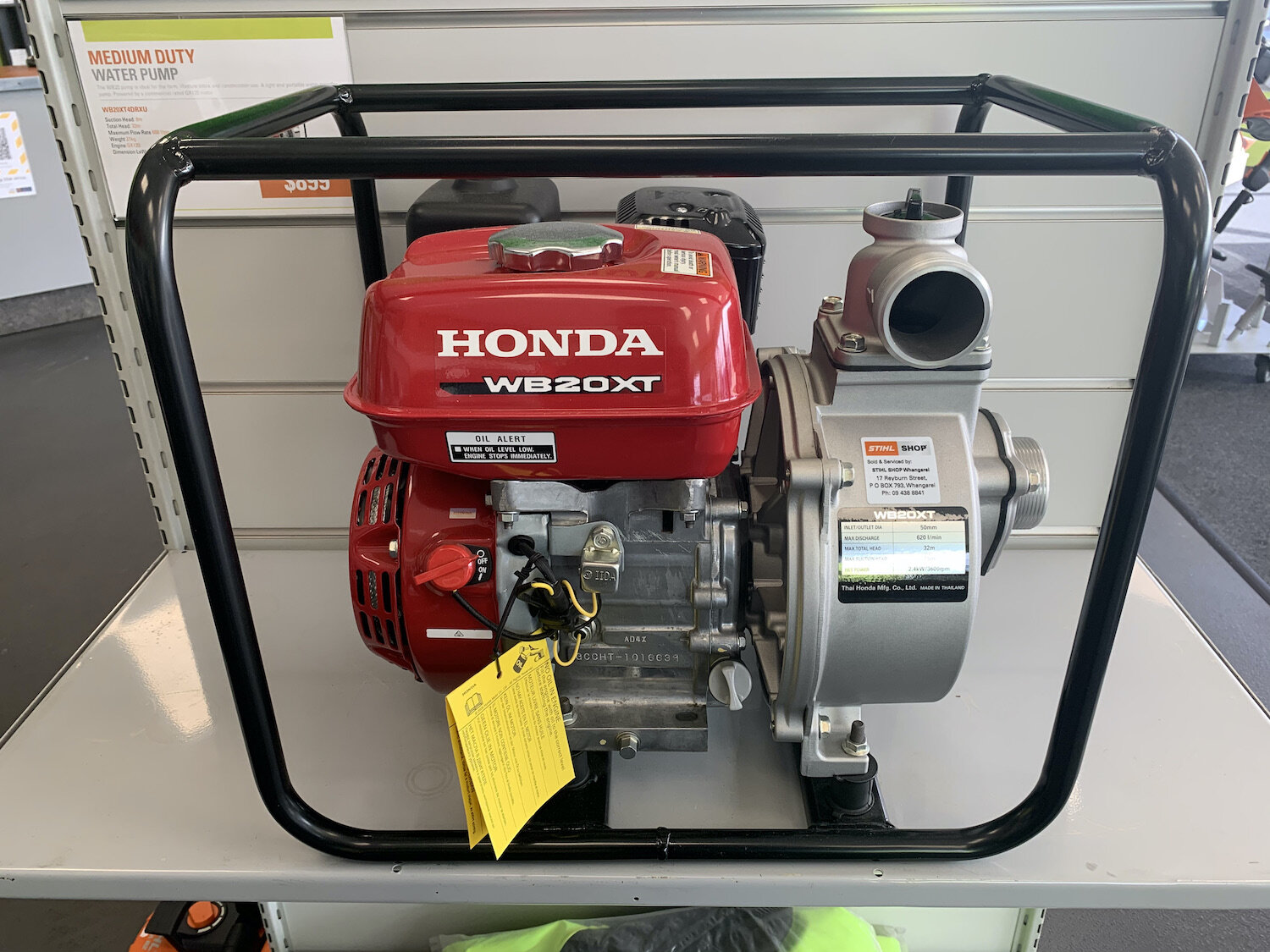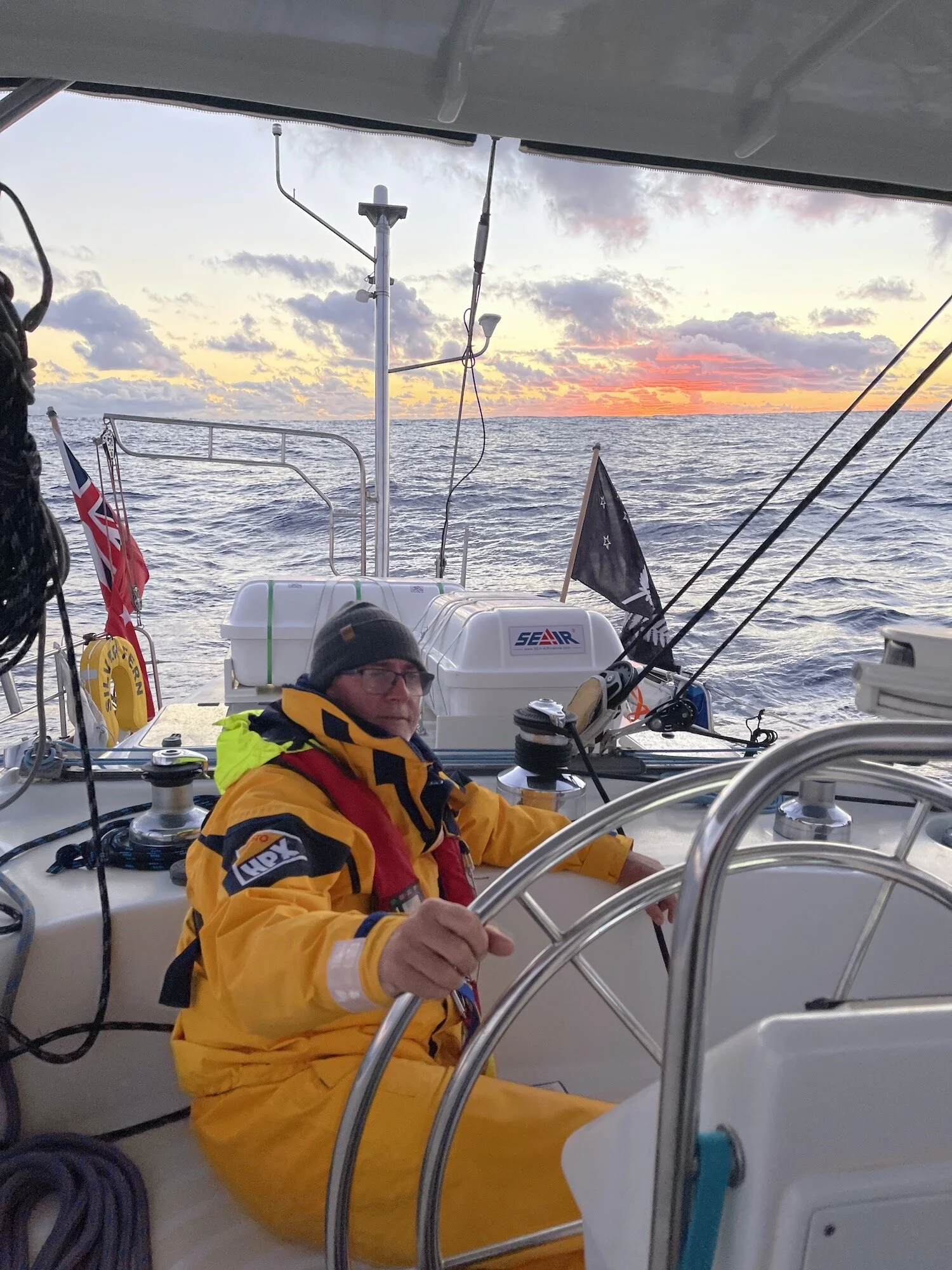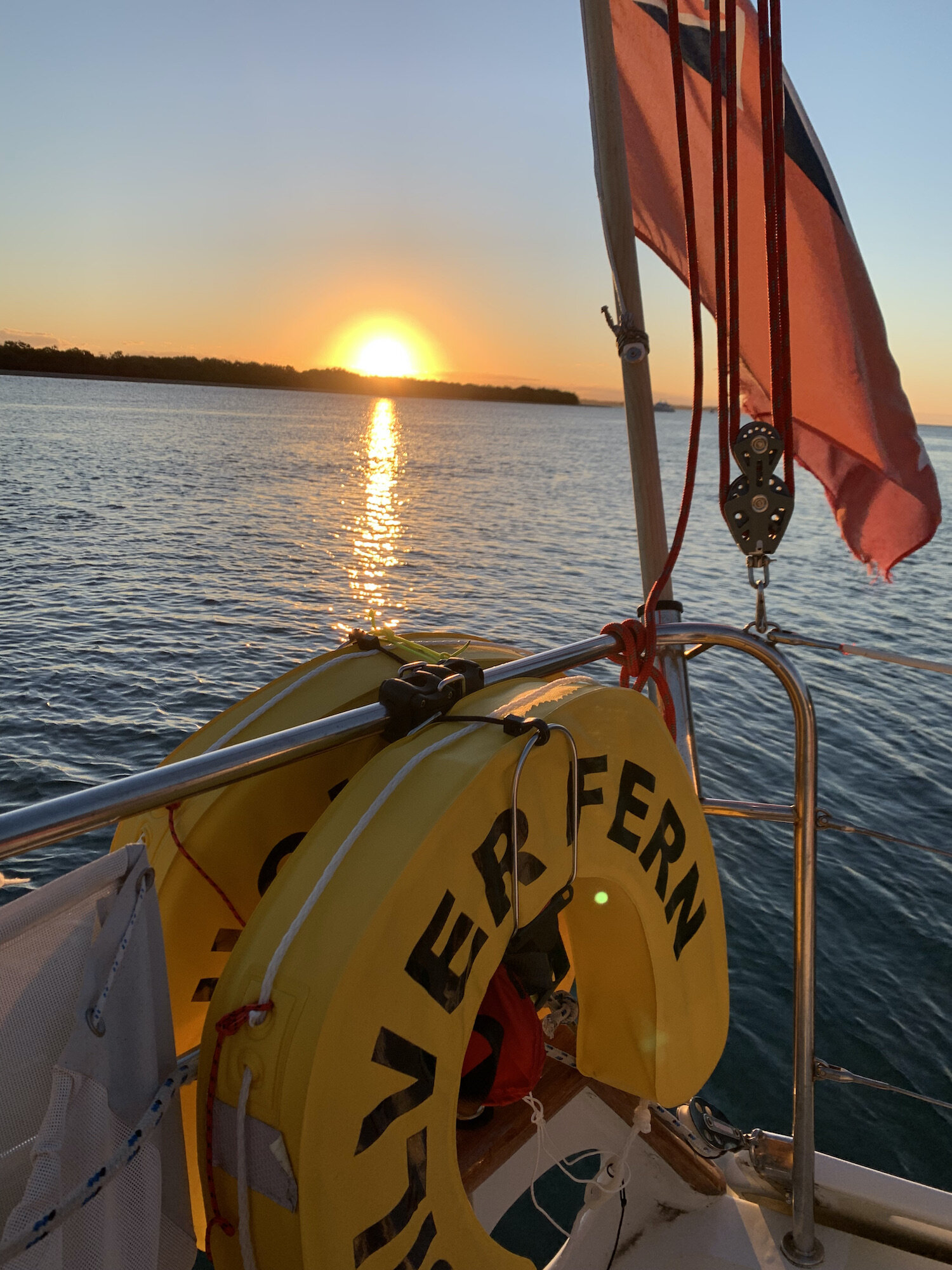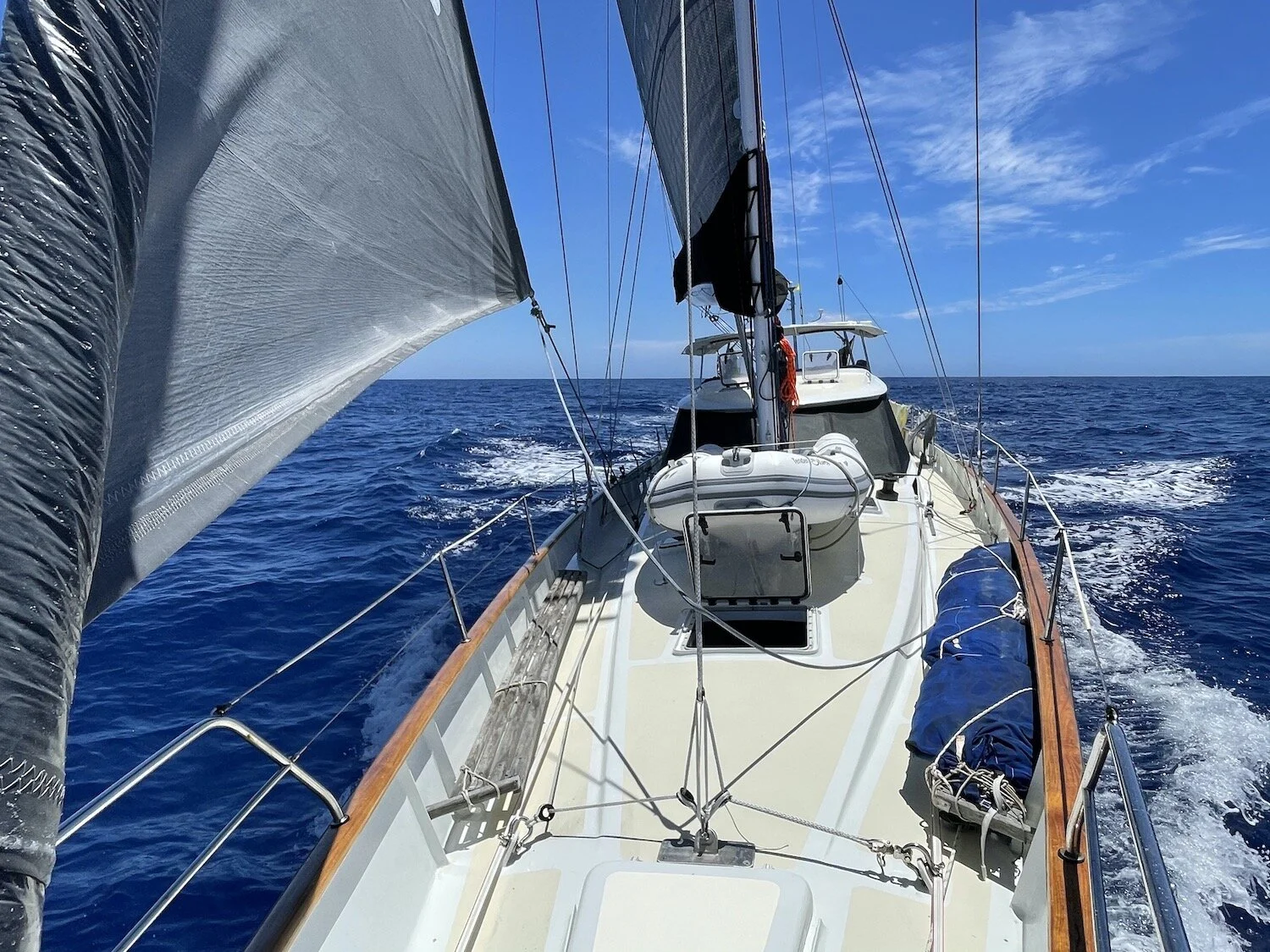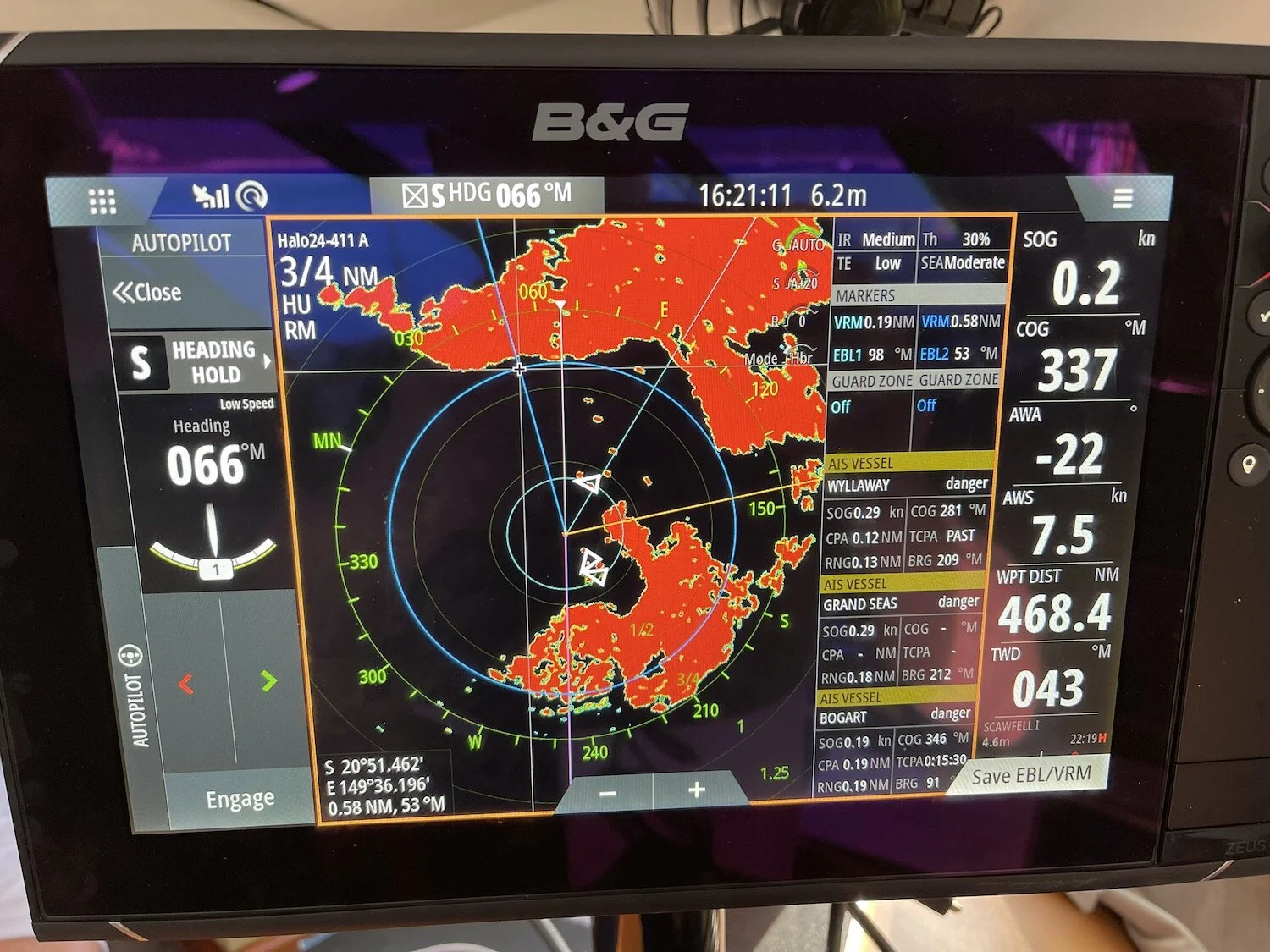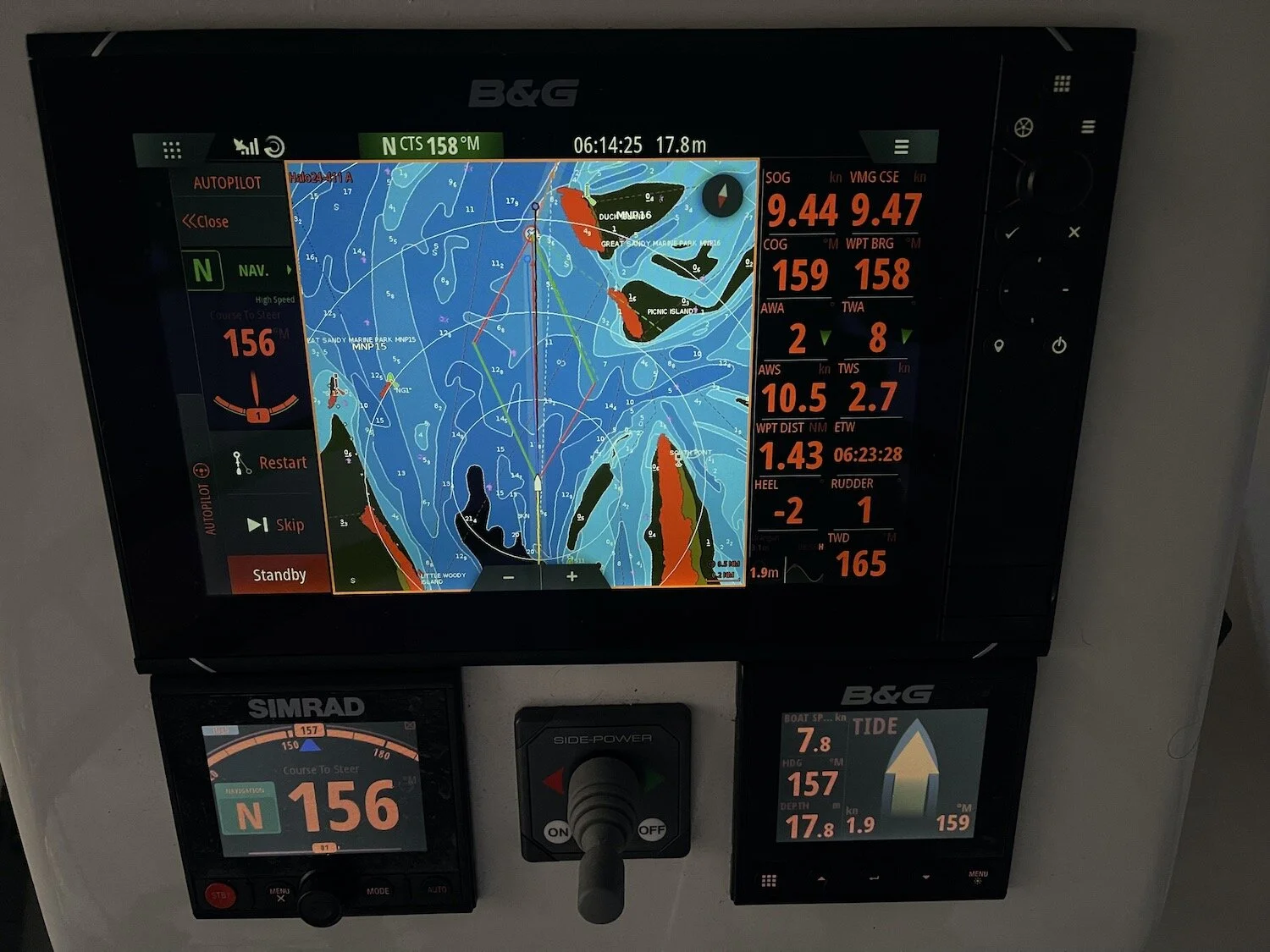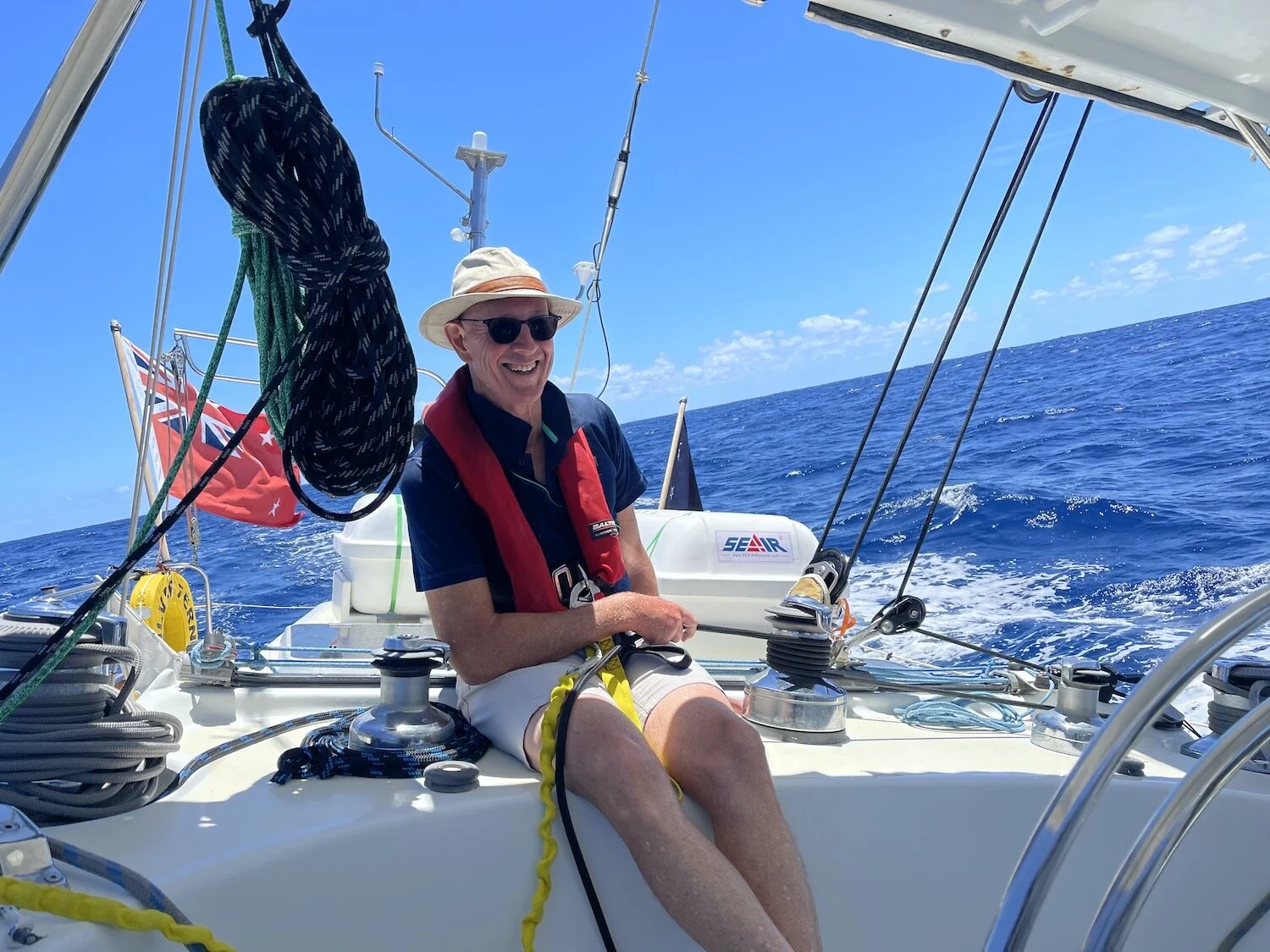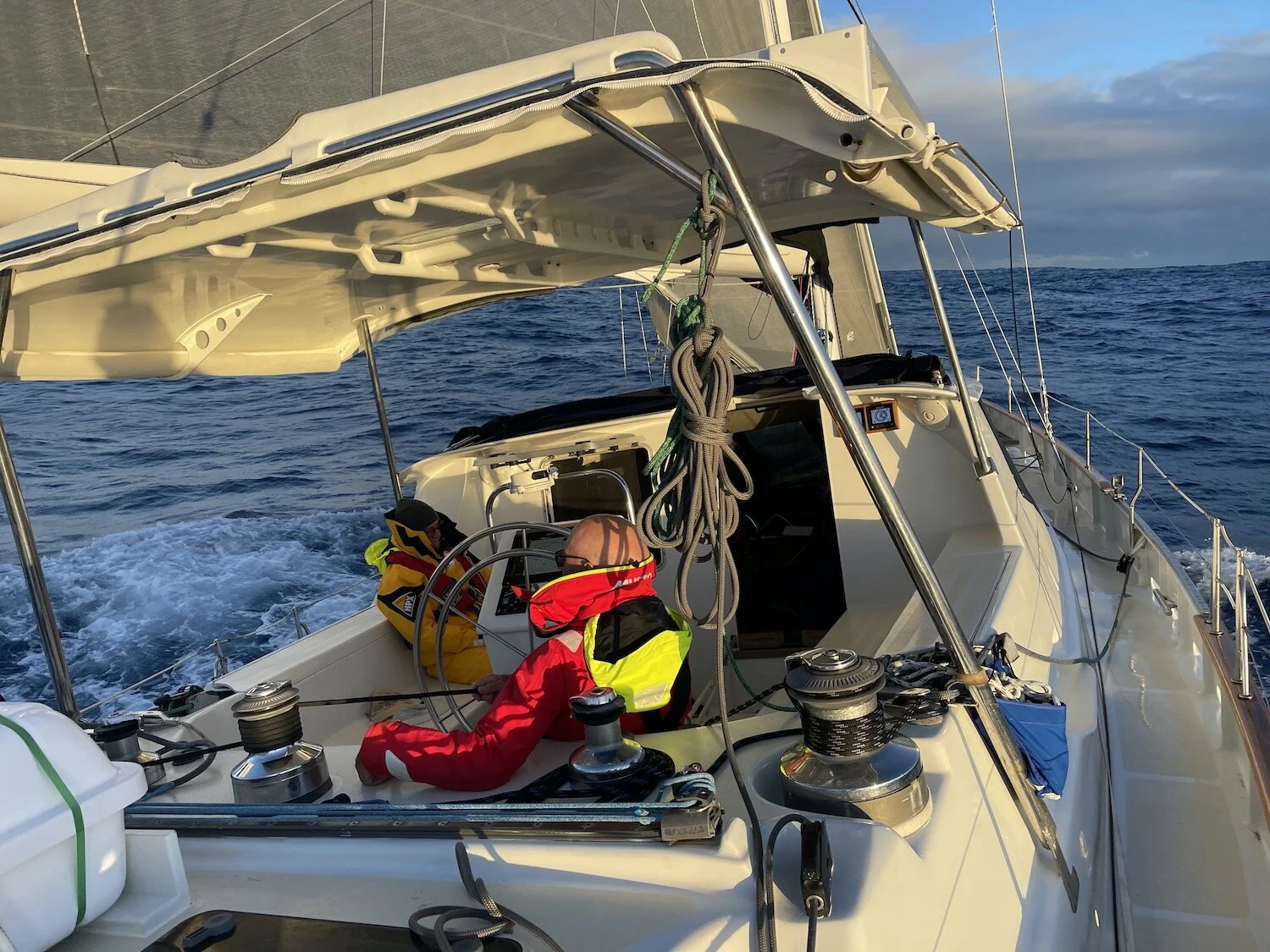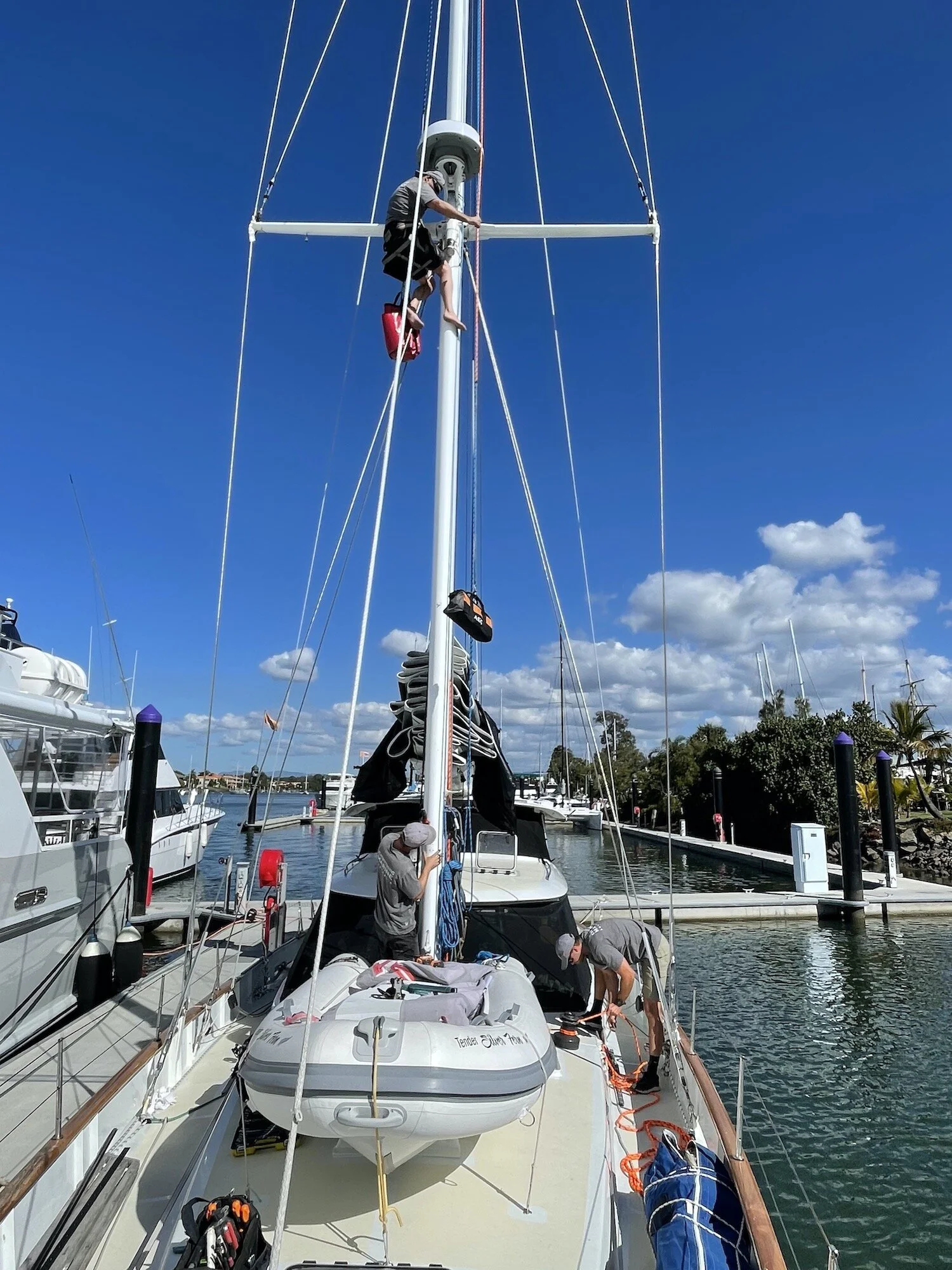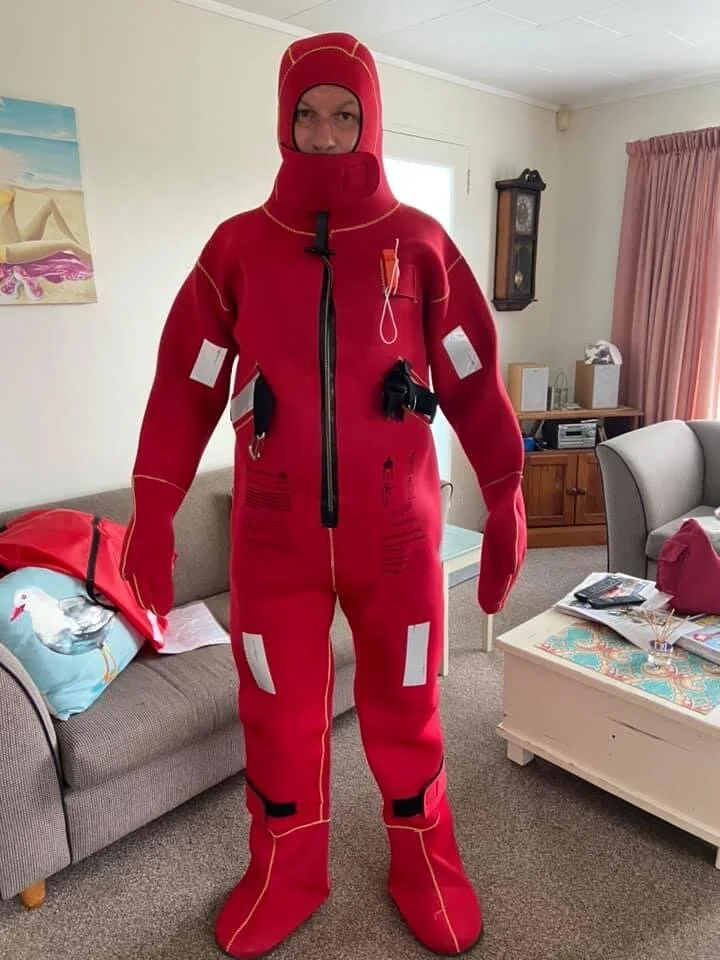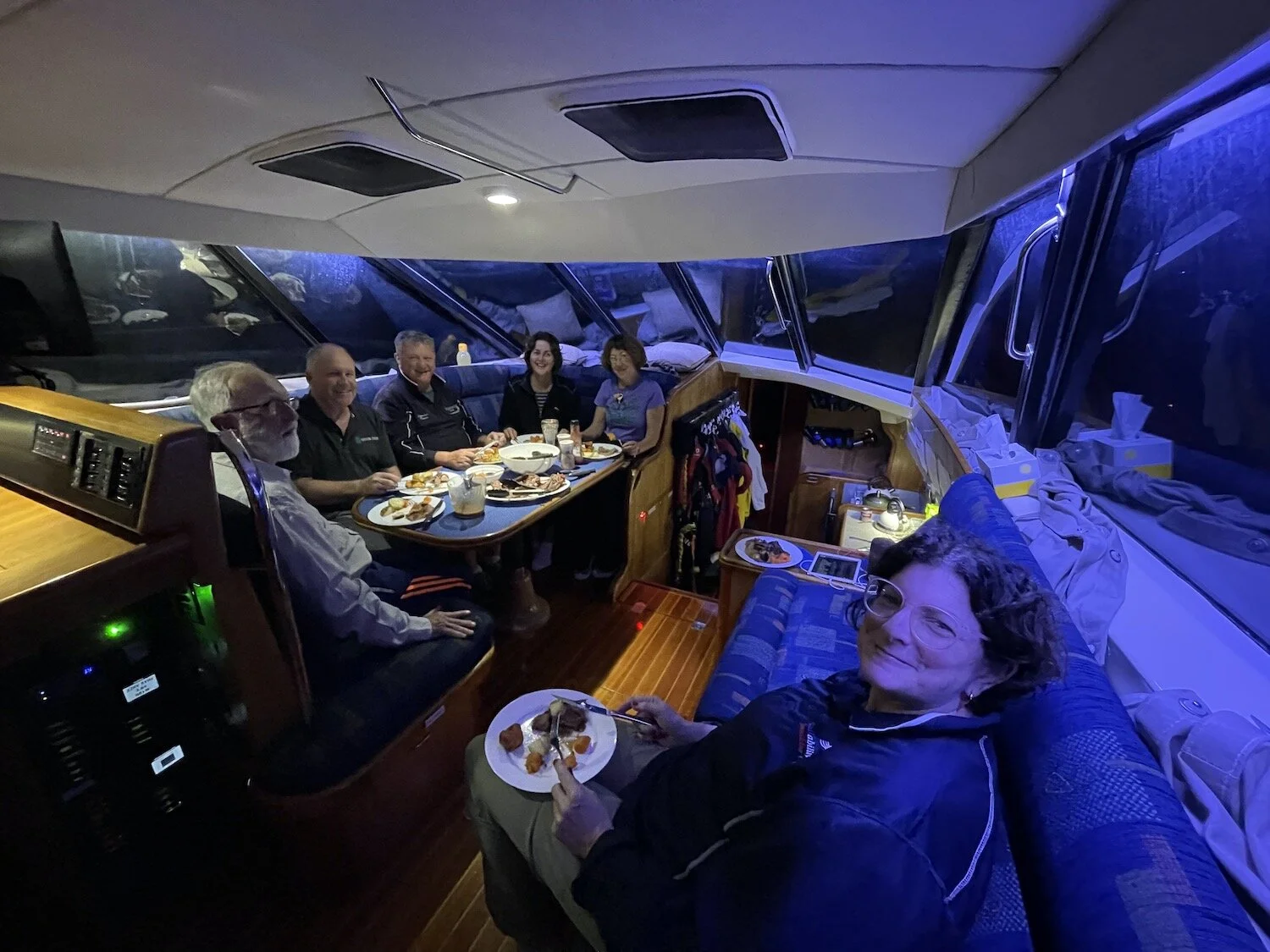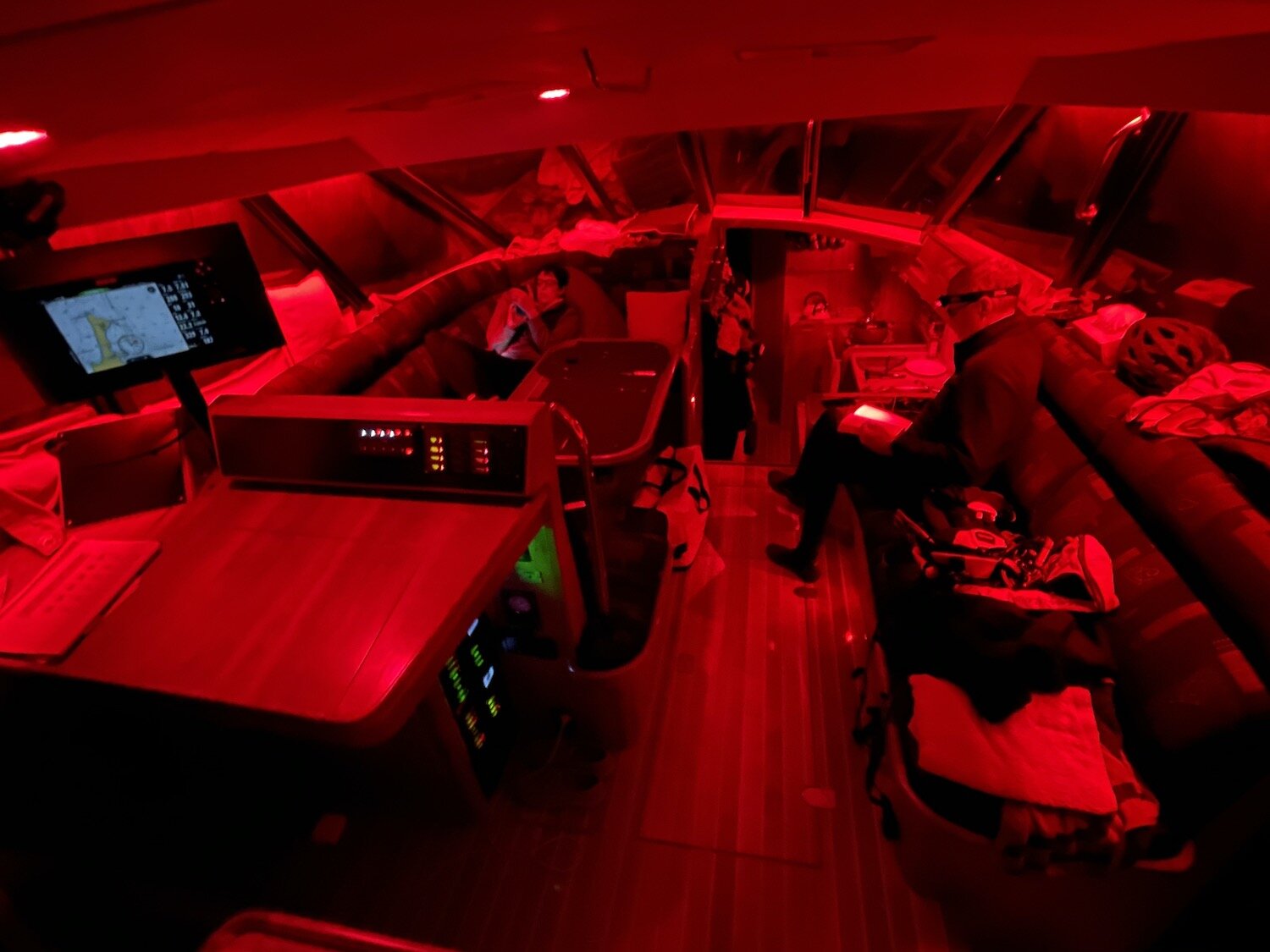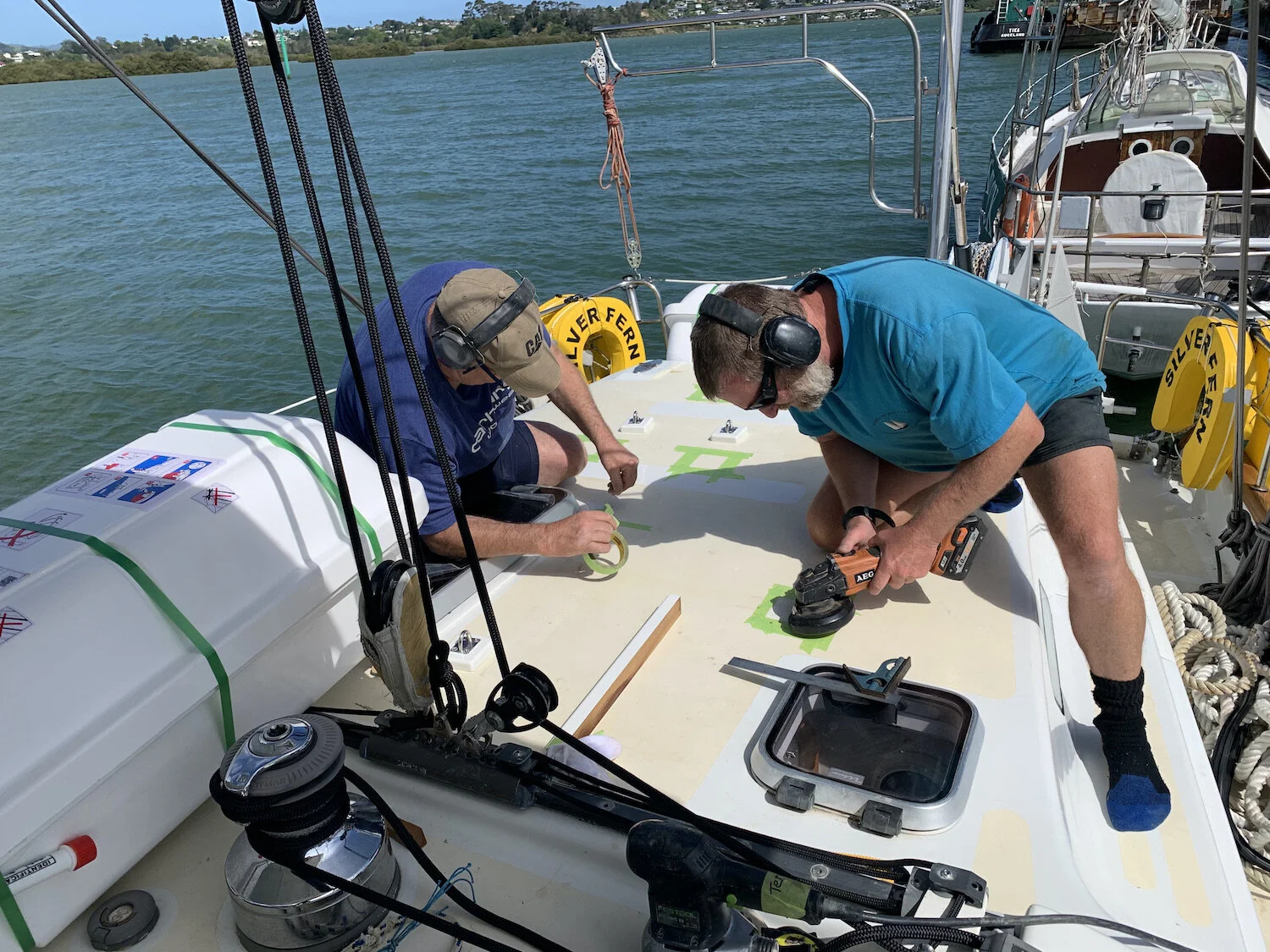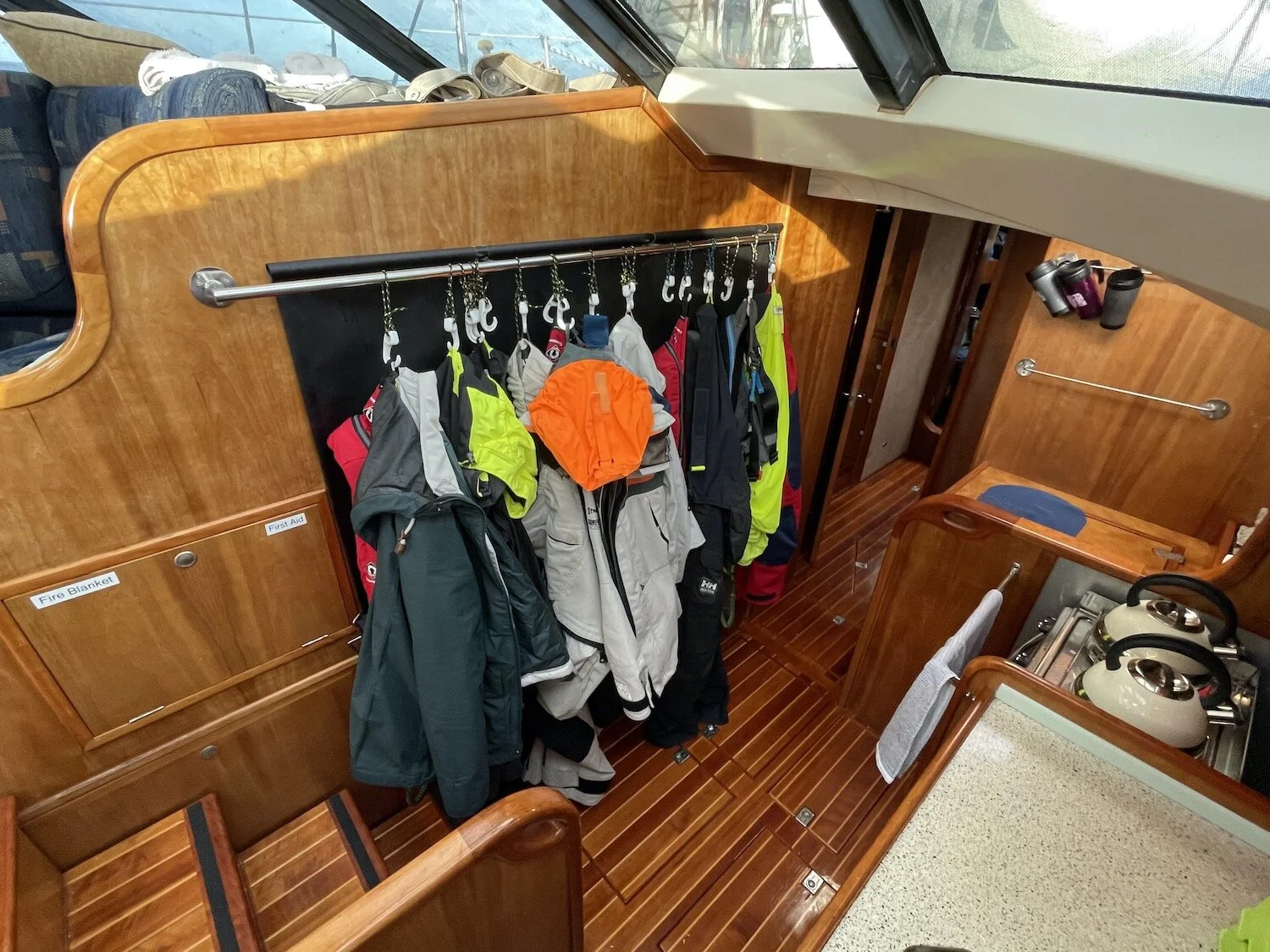Safety
Practice with emergency flares
Silver Fern is in ‘Unlimited’ survey under Maritime New Zealand and Salt Lines is in Unlimited’ survey under the MCA (UK). Te Kaihōpara is going into survey with Maritime New Zealand and due for sign off in September 2023. Our yachts are approved to operate internationally as a commercial charter yachts.
Silver Fern and Salt Lines are managed to a strict maintenance plan, that includes regular inspections and maintenance of the yachts and all of their safety systems and equipment.
In addition to 1-2 yearly survey inspections, Silver Fern and Salt Lines are also regularly audited by registered Australian Sailing National Equipment Safety Auditors to ensure we are compliant to the safety standards required for offshore racing. These safety audits are performed at least once annually and we are usually audited to Category 1 (Trans-Tasman / Sydney to Hobart) or Category 2 (Coastal Ocean Passage) standards each year depending on the events we have planned.
These rigid safety standards ensure that Silver Fern, Salt Lines and their crews, are well prepared and trained to handle extreme conditions confidently. Our professionally trained crew are required to complete Sea Safety and Survival, Marine First Aid, Radar, Master of Yachts <24m, Yachtmaster Offshore, Yachtmaster Ocean, Radio Communications and Diesel Engine Maintenance training courses as part of our crew training requirements.
safety, boat management checklists and manuals
Hoisting the carbon heavy weather staysail
Monitoring changes in wind direction and strength
Safety & emergency equipment and systems
We carry an extensive list of safety equipment on board Silver Fern and Salt Lines and are trained to use it in all conditions. The following equipment is an example of the type of gear carried on both yachts.
Dan-Buoy / Jon Buoy
On the stern there is a Jon buoy mounted on the pushpit that includes a light, whistle, sea drogue and inflatable lifebuoy and a 2-metre flagpole.
Before operating the Jon buoy, the training familiarisation video should be watched and on location training must be given by an approved crew member.
Emergency Position Indicating Radio Beacon (EPIRB)
Two EPIRBs are stored adjacent to the desk at the Nav Station. They are;
1 x GME 406 manually activated EPIRB GPS
1 x ACR 406 manually activated EPIRB GPS
These must be tested on a regular basis as per the maintenance schedule and serviced every 5 years.
The EPIRB only works successfully when in clear view of the sky. It does not work underwater or inside of a vessel or life raft.
Before departing on a passage, the EPIRB training familiarisation video should be watched by all new passengers and crew and on location training must be given by an approved crew member.
Fire fighting training using multiple types of fires
Fire fighting training drills inside mocked up ships
Fire Extinguishers
4 Fire Extinguishers are carried on the vessel.
One extinguisher is located in the aft cabin below the desk, one is located at the base of the steps on the starboard side of pilot house and two extinguishers are located in the mid cabin wardrobe. See the Safety Equipment Plan for a detailed map of the location.
Before operating a fire extinguisher, the training familiarisation video should be watched and on location training must be given by an approved crew member.
Fire Blanket
Two fire blankets are located in the clearly labelled cupboard on the wall opposite the galley sinks.
Before using the fire blanket, the training familiarisation video should be watched and on location training must be given by an approved crew member.
Flares
The flare storage containers are yellow with red screw top lids.
They are located in a storage cupboard underneath the Nav Station desk on starboard side of pilot house.
A range of flares are stored in these two containers and the list of flares includes;
Six Rockets - Use for out of sight signal up to 8nm range in daylight and 25nm at night.
Four red hand - Use at night-time within sight and 8nm range in daylight.
Two orange cans - Use during daytime and within site.
Two white hand - Use as a warning signal
2 life rafts and 4 life buoys on board on Silver Fern
600 litres per minute for fire fighting and emergency pumping
Grab Bags
There are two grab bags located in the corner seat storage locker on the port side in the aft cabin.
When prepared for abandoning ship it contains spare flares, a handheld GPS, spare medications, first aid kits, a waterproof handheld VHF radio, emergency personal gear, a second V sheet with a signalling mirror, a dolphin torch, a knife, a handheld satellite phone, emergency food and water, a cup, life raft instructions, life raft patches and glow sticks. See Abandon Ship Checklist for details of what to pack in the grab bag.
2 x 10 litre emergency water containers are also stored under the floor in the galley. These should be moved to the liferafts if deployed.
See Abandon Ship Procedure for details of the emergency process.
Heaving Lines
A lightweight orange poly heaving line is attached in a bag on the aft rail of the yacht.
1 x 250 rocket propelled throw line is stored under the pilot house.
See the Man Overboard Procedure (MOB) for details throw line use.
The heaving line training familiarisation video should be watched by all new passengers and crew and on location training must be given by an approved crew member.
Jack Lines & Strong Points
Safety webbing jack-lines are fitted to strong points fore and aft on each side of the cabin top and run all the way from the stern to the bow.
There is also a cockpit jack-lines that’s fitted when offshore or on passages that include night sailing. The cockpit jack-lines can be accessed from inside the pilot house, so that crew can clip on before leaving the safety of the pilot house to enter the cockpit.
The safety tether training familiarisation video should be watched by all new passengers and crew and on location training must be given by an approved crew member.
PFD and safety tether in use offshore
Lifebuoys with emergency lights, whistles and drogues
Lifebuoys
Two horseshoe lifebuoys are located on the port side of the pushpit and two on the starboard side. They are attached to a self-starting light, drogue and a whistle.
See the Man Overboard Procedure (MOB) for details of lifebuoy use.
The lifebuoy training familiarisation video should be watched by all new passengers and crew and on location training must be given by an approved crew member.
Life Raft
There are two 8-man life rafts on the aft cabin top.
There are instructions for deployment on the raft cases and in the nav station.
The attachment line is secured to a D fitting on the cabin top. If it is intended to be deployed from an alternative part of the yacht, it should be untied and retied at a suitable location.
The raft contains water, food and a number of other emergency items as listed in the contents and instruction pack stored in the grab bag.
See the Abandon Ship Procedure for details of deploying the life raft.
The life raft line training familiarisation video should be watched by all new passengers and crew and on location training must be given by an approved crew member.
Medical Kit
The ships medical kit is provided by Oceania Medical and made up of several parts.
These are stored in the wall cupboard opposite the galley and in the forward cabin wardrobes.
They include a full range of dressings, drugs and medications and many can only be administered by trained first aid crew under instructions from a doctor (via radio or sat phone).
A stocktake record is kept inside each medical kit and this must be filled in when anything is consumed from the kit.
The vessel usually carries at least two marine qualified first aiders onboard who have specialised training in administering medications.
The medical log must be filled in and witnessed after any injury or illness is sustained by anyone with details of medication given.
The Accident & Incident Register must also be completed as soon as possible after the incident.
The phone number for both the Australian (+61 2 6230 6811) and the New Zealand (+64 4 577 8030) Rescue Coordination Centres are stored in both Sat phones and the RCC’s can be called to get medical advice from a doctor prior to administration of medication.
A summary of crew/passenger medical conditions should be entered into the ISM Management System prior to departure.
The Class 3 Ships Oceania Medical Kit
3.5m RIB and 20hp outboard on foredeck
Navigation, Weather & Electronics
2 x B&G Zues 3S 12 inch Chartplotter’s
2 x external monitors to display Chartplotter display in pilot house and aft cabin
AIS - Automatic Vessel Identification System
B&G Helo Dual Radar with 40nm range with collision avoidance tracking
4 x Triton vessel data and wind instruments
B&G Autopilot
3 x GPS units
Iridium Go Satellite Data
PredictWind weather forecasting and routing system
CZone integrated digital switching and circuit control system
Personal Floatation Devices (PFD’s)
12 x 150n - 180n PFD jackets, fitted with crotch straps, lights and whistles are stored in the PFD cupboard on the starboard side of the pilot house port.
These are manually inflated with gas by pulling on the toggle on the bottom right side of the front of the jacket when worn.
These are all numbered from 1-12 and when you are allocated your PFD, adjust the waist and crotch strap so your PFD fits you firmly. You will use the same PFD for the entire passage/race.
They are designed for adults weighing more than 60 kg.
Whistles and lights are attached to each and there is a mouthpiece you can use on the left shoulder to add more air for greater buoyancy.
Refer to the Safety Harness and PFD Policy for details on when PFD’s must be used.
The PFD training familiarisation video should be watched by all new passengers and crew and on location training must be given by an approved crew member.
Using radar to monitor rain front and AIS vessels
Night navigation through shallow channels using radar and GPS
Personal Locator Beacon’s (PLB’s)
Personal locator beacons (PLB’s) are carried onboard for all crew and passengers.
The brands used are Kannad Safe Solo and ACR ResQLink.
The instructions for operating these are contained on the top of each device and should be reviewed when fitting them to your PFD. When activated, a PLB transmits your GPS location to the rescue coordination centres in Australia and New Zealand which they will pass to Search and Rescue organisations.
To operate effectively the need to be activated and have the aerial in a direct line of sight to sky (e.g. not below sea surface).
A PLB will transmit for at least 24 hours before the battery goes flat. If you are in the water or in a life raft in a group, only activate one PLB at a time, to maximise days of battery length and transmission time.
All PLB’s and race/passage plans, routes and dates are logged with AMSA in advance of each race/passage, so they know when we are expected to be at sea.
Refer to the Safety Harness and PFD Policy for details on when PLB’s must be used. The PLB training familiarisation video should be watched by all new passengers and crew and on location training must be given by an approved crew member.
RIB Inflatable Tenders
1 x 3.5m RIB + 20hp outboard motor
1 x 3.0m RIB + 6hp outboard motor
1 x emergency RIB kit
Safety Tethers
There are 12 safety tethers carried onboard.
Some are single 2-metre only and some are doubles with 1-metre and 2-metre tether options.
You should leave your tether attached to your PFD, when stored below so that if you need to get up on deck quickly, your tether is at hand.
Refer to the Safety Harness and PFD Policy for details on when safety tethers must be used.
The safety tether training familiarisation video should be watched by all new passengers and crew and on location training must be given by an approved crew member.
Safety Equipment Storage
Each yacht carries the following safety equipment onboard. Refer to Appendix 12 of the operating manual for a floor layout plan and a wall chart is displayed at the Nav Station.
Cockpit / Helm
2 x emergency knives
1 x B&G Zues 3S 12 inch Chartplotter’s
AIS - Automatic Vessel Identification System
B&G Helo Dual Radar with 40nm range with collision avoidance tracking
4 x Triton vessel data and wind instruments
B&G Autopilot
13 x GPS units
CZone integrated digital switching and circuit control system
Trimming the mainsail on a Tasman Sea passage
Enclosed cockpit for safety and protection from weather
Lazarette
1 x Emergency tiller
1 x Storm Jib
Storm boards for windows and hatches
Aft Cabin top
1 x Ocean Safety Jonbuoy Danbuoy
4 x Horseshoe Lifebuoys with whistles, lights & drogues
1 x 15m throwline
1 x Rescue sling
2 x SeaAir SOLAS A 8-man liferafts
1 x back up stern light
1 x deck flood down light
Forward cabin top
1 x 3.5m RIB with SOLAS emergency equipment kit and 20hp outboard
1 x Series Storm Drogue
1 x back up port / starboard bow lights
Regular maintenance checks and upgrades in progress
10 Immersion suits onboard keep you alive in 5 degree water temps
Personal Safety
10 x MED certified immersion suits
10 x 180n inflatable PFDs with strobe lights & whistles
2 x 150n inflatable PFDs
27 x life jackets
11 x safety tethers
10 x personal locator GPS beacons
Under Pilothouse
1 x Honda 600 litres p/min petrol pump
1 x 50-ton towing line 100m in length
1 x 250 rocket propelled throw line
1 x submersible portable 24v bilge pump
1 x SSB emergency aerial
1 x VHF emergency aerial
1 x Whale manual bilge pump
Spacious weather proof pilot house on Silver Fern
Red lighting throughout for night watch vision
Nav Station
1 x GME 406 manual activated EPIRB GPS
1 x ACR 406 manual activated EPIRB GPS
1 x B&G fixed VHF radio
1 x B&G portable VHF radio
1 x Icom handheld VHF radio
1 x Icom SSB radio
1 x Garmin handheld GPS
1 x Iridium Go Satellite Data unit – integrated with Iridium Go Sat phone and PredictWind weather
1 x Flamefighter 9.0 Litre Foam Extinguisher
1 x B&G Zues 3S 12 inch Chartplotter’s
1 x external monitors to display Chartplotter display in pilot house and aft cabin
AIS - Automatic Vessel Identification System
B&G Helo Dual Radar with 40nm range with collision avoidance tracking
B&G Autopilot
23 x GPS units
Iridium Go Satellite Data
PredictWind weather forecasting and routing system
CZone integrated digital switching system
Cabins
12 x EvacuLife Emergency Fire Smoke Mask & Escape Hood
2 x red fire buckets
2 x buoyant orange smoke flares
6 x red hand flare
6 x parachute distress rocket
2 x handheld orange smoke
3 x handheld torches
2 x Flamefighter 4.5kg ABE Dry Powder Fire Extinguishers
2 x Grab bags
1 x Escape ladder
1 x 25 litre oil spill kit
First Aid kits
Yachts required regular work to maintain water tight integrity
Rack for hanging wet weather gear makes it easy to find at night
Engine room
1 x Firepro FP 1200 fire extinguisher system to automatically extinguish and engine room fire in ‘0 seconds’
Mast
1 x B&G Helo Radar
3 x deck flood down lights
Fog Horn / PA
Further reading and training resources
Find out more about joining us for ocean racing and regattas or ocean passages. Check the sailing calendar.


